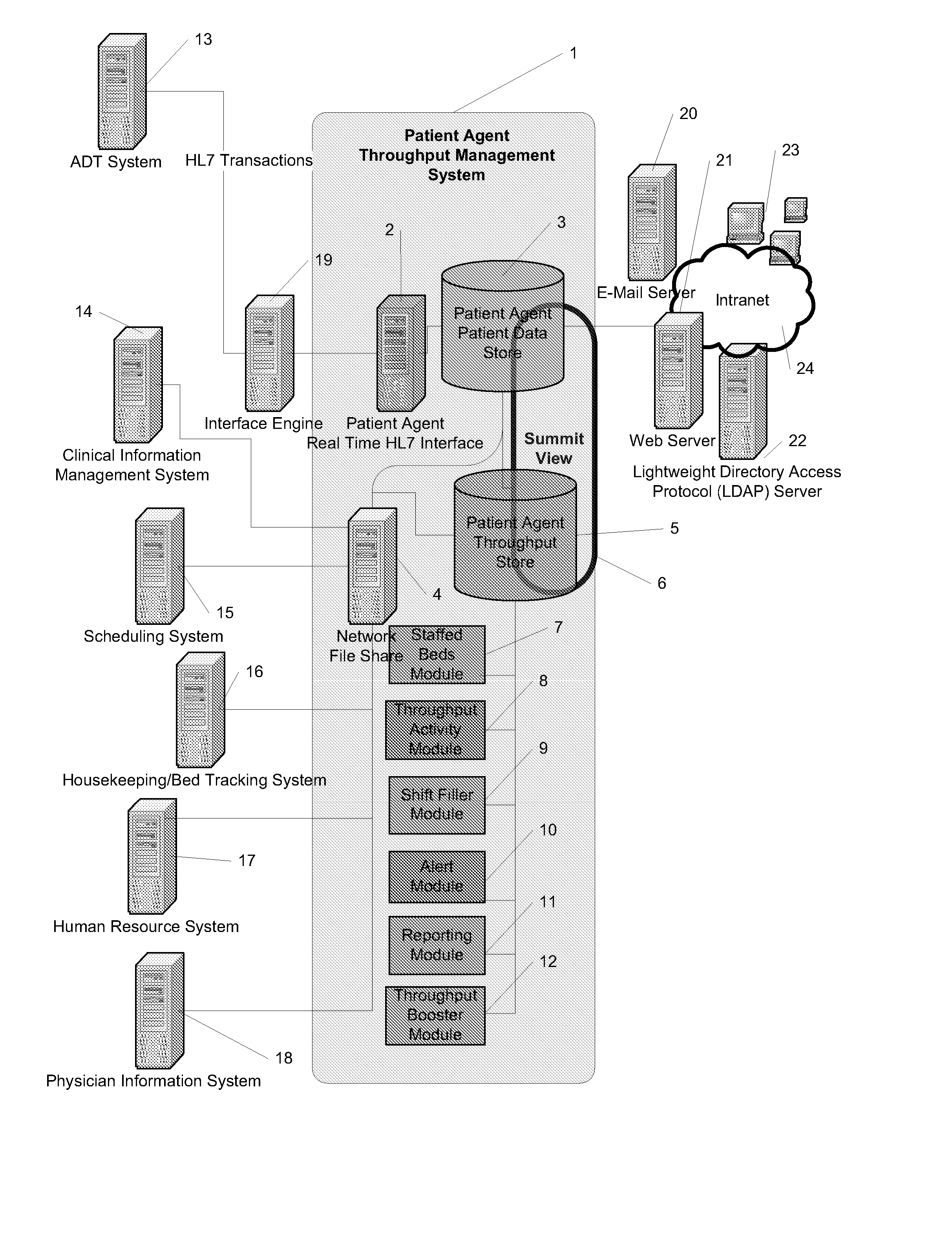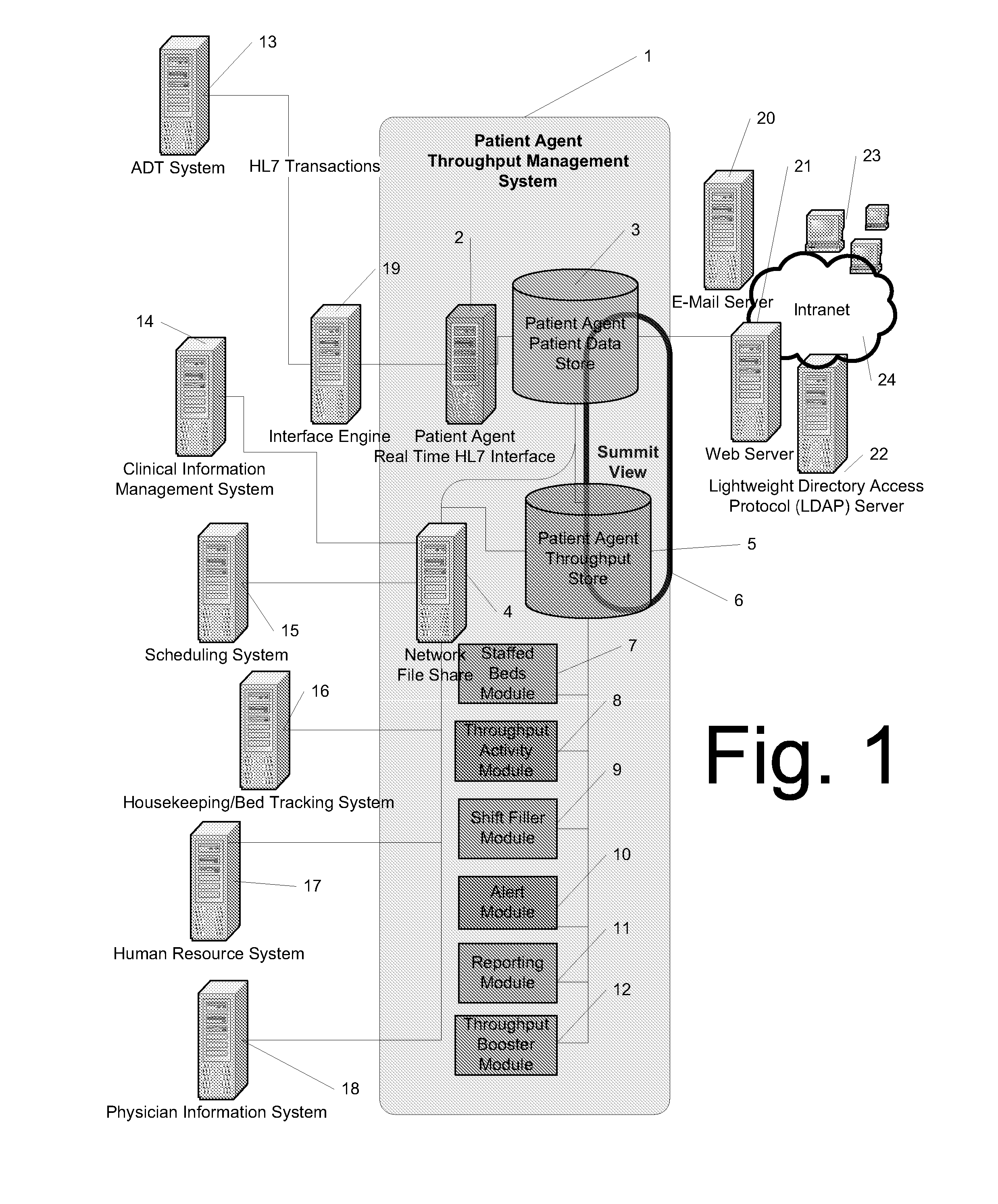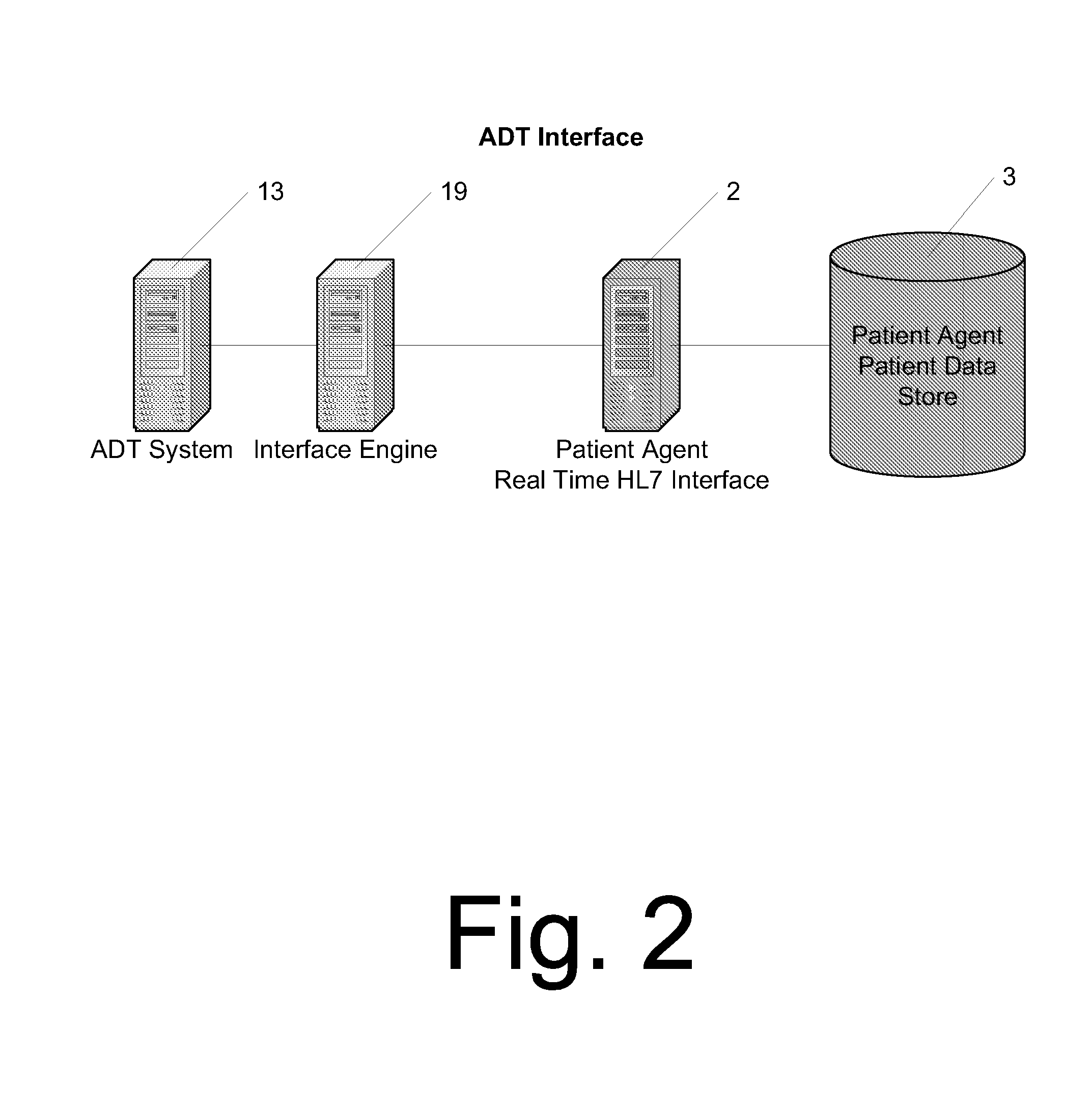System and method for managing patient bed assignments, bed occupancy, and staffing in a healthcare facility operation
a technology for managing patient beds and operating methods, applied in healthcare resources and facilities, instruments, data processing applications, etc., can solve problems such as increasing the time it takes to make informed patient placement decisions, affecting patient placement decisions, and inaccessible information to staff, so as to avoid patient diversions and maximize bed resources
- Summary
- Abstract
- Description
- Claims
- Application Information
AI Technical Summary
Benefits of technology
Problems solved by technology
Method used
Image
Examples
Embodiment Construction
HL7 Events Processed:
[0195] A01—Admit a patient
[0196] A02—Transfer a patient
[0197] A03—Discharge a patient
[0198] A04—Register an outpatient
[0199] A05—Preadmit a patient
[0200] A06—Transfer an outpatient to an inpatient
[0201] A07—Transfer an inpatient to an outpatient
[0202] A08—Update patient information
[0203] A11—Cancel admit
[0204] A13—Cancel discharge
[0205] A17—Swap patients (create two A02 events)
[0206] A18—Merge patient information
[0207] A31—Update person information
[0208] A36—Merge patient information, patient ID and account number
[0209] Appendix B: Patient Agent Data Interface Classes HL7 Messages Handled Public Class HL7 Private Const sConnectionString Private sHL7Record As String Private objMSH As MSH Private objEVN As EVN Private objPID As PID Private objPVI As PV1 Private objPV2 As PV2 Private objZPI As ZP1 Private objZVI As ZV1 Private objAL 1 As AL1 Private objINl As INI Private objIN2 As IN2 Private objMRG As MRG Private objNKI As NK1 Private objNPU As NPU...
PUM
 Login to View More
Login to View More Abstract
Description
Claims
Application Information
 Login to View More
Login to View More - R&D
- Intellectual Property
- Life Sciences
- Materials
- Tech Scout
- Unparalleled Data Quality
- Higher Quality Content
- 60% Fewer Hallucinations
Browse by: Latest US Patents, China's latest patents, Technical Efficacy Thesaurus, Application Domain, Technology Topic, Popular Technical Reports.
© 2025 PatSnap. All rights reserved.Legal|Privacy policy|Modern Slavery Act Transparency Statement|Sitemap|About US| Contact US: help@patsnap.com



